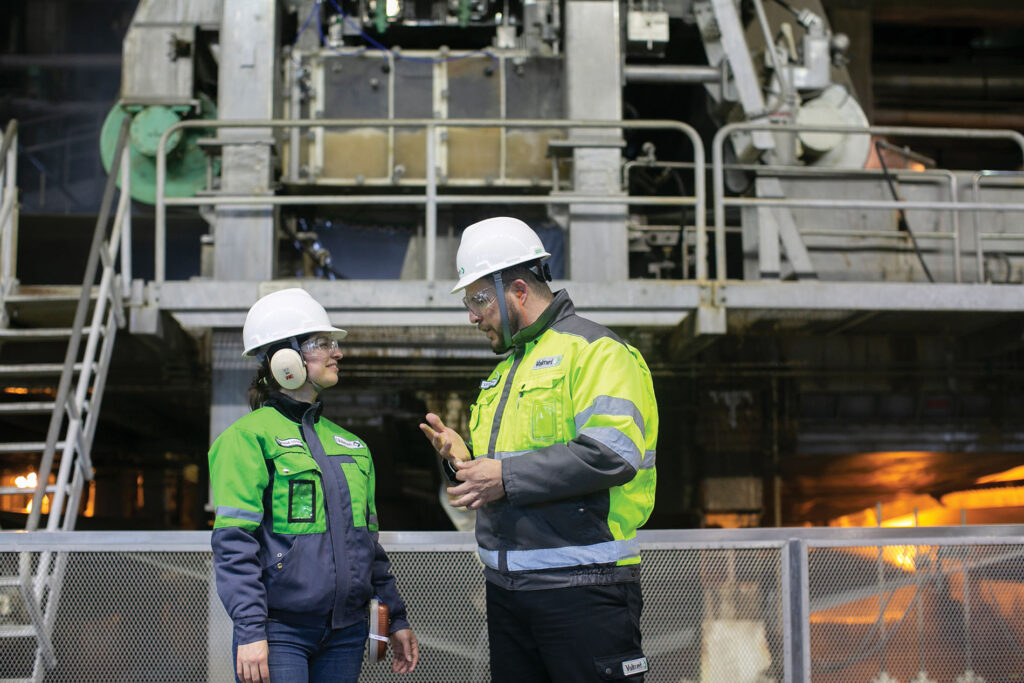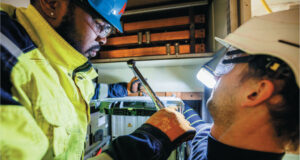MARK SHIELDS, BYRON MUHS, AND DREW HUMPHRIES
For many years, professionals have been warned of a forthcoming sea change caused by a dramatic shift in workplace demographics. This shift is of particular concern to the pulp, paper, and manufacturing industries, where the aging workforce results in a need for succession planning and managing the loss of that expert knowledge.
According to a recent study by Pew Research, in the third quarter of 2020, about 28.6 million “baby boomers”—those born between 1946 and 1964—left the labor force due to retirement, a year-over-year increase of 3.2 million. This marks a significant acceleration since the beginning of this generational transition in 2011 when the eldest baby boomers became eligible to retire, eclipsing the previous largest year-over-year increase of 2.5 million, which occurred between 2014 and 2015.
LEVERAGING KNOWLEDGE
TO PROVIDE SOLUTIONS
This evidence, both quantitative and anecdotal, points to a unique set of challenges facing businesses today: how do you capture the institutional knowledge of more experienced personnel, quickly recruit and train new people, and keep performance at a high level? One helpful solution might be hiding in plain sight, a solution that has been here along: original equipment manufacturers (OEM).

The most fundamental benefits of an OEM supplier are the resources and expertise. “We are the ultimate OEM partner that services a range of brands in both a traditional sense and with today’s technology and thinking,” says Mark Shields, product aftermarket manager, Valmet North America. “Our database and expertise, combined with advanced software, allows us to know exactly how customer products are performing—or underperforming.”
In a time when resources and expertise are limited, original equipment manufacturers can be true partners in helping mills achieve their goals. Shields has a perspective based on 20 years of equipment experience that is part field service, part systems engineer, and part product optimization. Regarding one area of the mill—the cleaner plant—he adds, “We train our people and customers to understand the process and further optimize their system. We make sure everything is running correctly through close observation on-line and regular in-person audits.”
He offers one example that may sound familiar to those in the industry. “Sometimes unexpected objects like a cell phone, tape measure, or chunks of tile are found lodged in the cleaners. In these cases, the problem isn’t with the cleaners themselves, but rather a situation that needs troubleshooting. As the OEM, we’re uniquely suited to respond with a rapid and effective remedy.”
As Shields indicates, partnering with the OEM can solve real problems at the mill. Backed by OEM knowledge, mills benefit from better maintenance planning, performance, and reliability; lower risks of downtime; and less costly repairs.
OLD EQUIPMENT,
NEW WAY OF WORKING
Complicating matters for North American pulp and paper producers are general market trends and the impact of those trends at the mill level. As the industry moves further away from traditional writing paper, while packaging and tissue grades expand even further, it is likely that the demand for infrastructure changes will continue.
According to Drew Humphries, vice president, pulp & energy, Valmet North America, “Most fiberlines in North America are more than 35 years old. A lot of changes can occur in the mill over that long period of time. In fact, many machines have been converted to make entirely new grades.” This means that the original use of the installed equipment has been altered, in some cases many times over.
It is likely that the on-site operators have also changed. Beyond that, the industry’s suppliers have consolidated repeatedly over this period, making it difficult for mill personnel to follow the official OEM suppliers for each machine, as well as their service, maintenance, and operational recommendations.
The combination of those facts, and the lack of technical equipment training for newer mill operators, presents new opportunities for mill teams to connect with trusted OEM partner organizations. “Often there is little connection among the machine, its OEM, and its current operator,” says Humphries. “However, in those scenarios, performance and reliability agreements have become very popular. Our experts collect, organize, and develop plans from a mill’s operational data, then use OEM recommendations to help ramp up operations to optimal levels.”
OPTIMIZING PERFORMANCE & RELIABILITY THROUGH AGREEMENTS
“Our maintenance teams are becoming on-site and virtual racing pit crews,” explains Byron Muhs, business manager, performance & reliability agreements, Valmet North America. “When a customer feels confident that their supplier knows every detail about the machine’s rebuild/upgrade history and component changes, they don’t need to worry about the tired, temperamental nature of an old machine. It’s reassuring.”
Muhs notes that a technical hierarchy is the foundation for all maintenance data. It is all linked into a Computerized Maintenance Management System (CMMS) that pulls together spare parts, drawings, manuals, BOMs, machine cards, and more. Audits and analyses determine the criticality of a mill’s equipment, and this criticality is the basis for the maintenance planning that is scheduled into the agreement.
“At each mill, a comprehensive network of historical knowledge about systems and spare parts is readily available,” says Muhs. “Alongside the library of information, Valmet Industrial Internet provides access to real-time tracking against established markers of success for equipment similar to what is installed in that specific mill.”
THE POWER OF THE OEM’S INDUSTRIAL INTERNET CAPABILITIES
There are many other tech companies that offer Industrial Internet solutions; however, they lack the expert knowledge of the actual machines. Valmet’s OEM database includes all products that are part of a mill’s pulping, stock preparation, finishing equipment, or paper machine. This includes all purchases over the past decades, featuring extensive catalogs of product information and minute details.
In addition, at Valmet Performance Centers, expert teams monitor data from the paper machine—from the headbox through the winder—with alerts for potential failure. Systems are programmed to observe fiber quality, paper, or paperboard starting to degrade, all in real-time. When there is an anomaly, an expert reviews the issue and emails a report with attachments, including supporting actions and follow-up recommendations.
BRIDGING THE GENERATIONAL GAP THROUGH PARTNERSHIP
One factor overlooked when addressing the aging workforce is the fact that the OEM has a collection of know-how and experience with legacy information right at its fingertips. Leveraging and embracing technology to share this information is critical. OEMs can ease this transition and modernize these relationships in the industry—whether they include the equipment owner, trade organizations, employees, students, or new hires.
Building a foundation of knowledge about the industrial history of the equipment and processes used in the mills is essential to educating new entrants to our industry. Through internships, apprenticeships, graduate programs, digital learning, or other onsite trainings, a strong commitment to learning and development must be part of this progression.
This knowledge transfer can go both ways. “You might say that I am now a veteran player-coach,” quips Drew Humphries. “I’m proud to say that I’m more effective with today’s problem-solving tools. Information technology is second nature for our young engineers, and in many ways, they are teaching me as I am teaching them.”
Learning, just like peace of mind, occurs when a strong level of trust is present. OEM partnerships are built around that trust. While there is no “one-size-fits-all” model for solving the workforce dilemma, collaborating with someone you trust is a powerful first step.
The authors are with Valmet North America, which is the official OEM for dozens of legacy manufacturing brands, such as Beloit, Celleco, GL&V, IMPCO, Kamyr, Sunds Defibrator, J&L Fiber Services and PMP. Visit valmet.com.
 Paper 360
Paper 360
